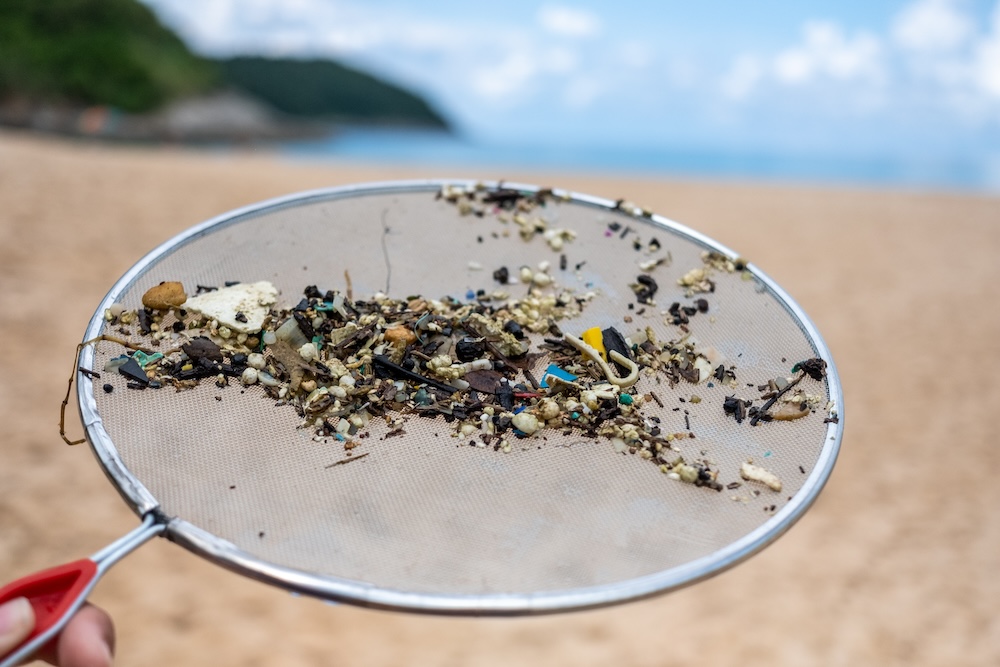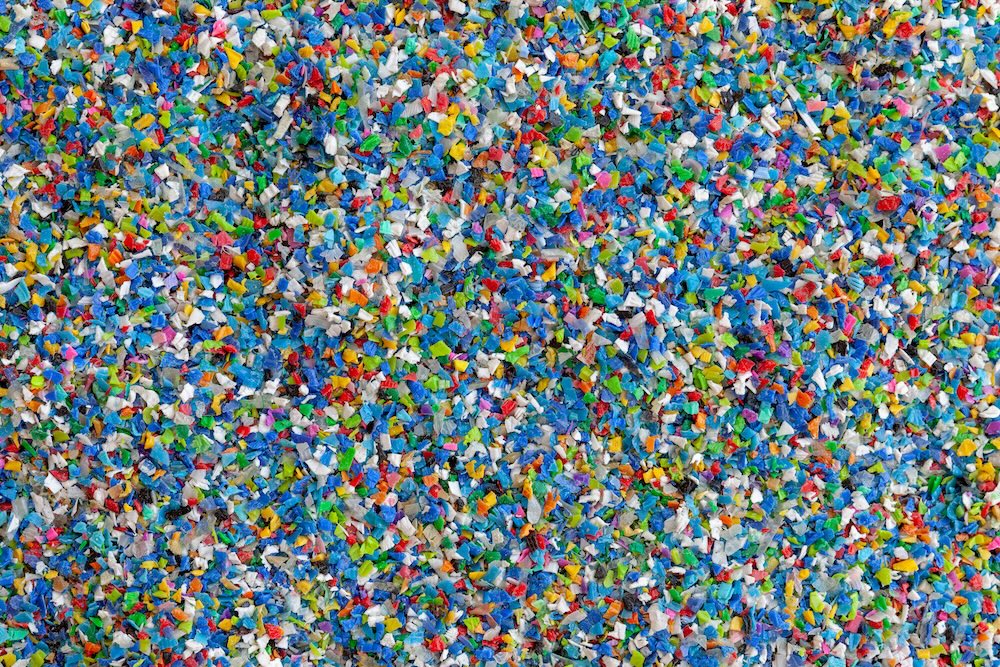Microplastics have become a pressing concern for public health and the environment. These tiny plastic particles, measuring less than five millimetres, can have detrimental effects when they accumulate in our water systems. They can be found in the form of microplastic fibres and degraded pieces that originate from larger plastic items.
The wastewater treatment system is effective in filtering out larger microplastic pieces or fibres. However, the smaller particles often pass through and end up in the ocean or other large water bodies. Stormwater flows also contribute to the dispersion of microplastics on land and in water. When consumed, microplastics can be transferred to humans through livestock and fish, posing potential health risks.
The smallest of microplastics can become airborne and can be inhaled or ingested by humans.

Microplastics are very small pieces of plastic that pollute the environment.
The Health Risks and Scientific Consensus
The impact of microplastics on human health is an area of ongoing research, and scientific consensus has yet to be reached. Studies analysing the health risks associated with microplastics in drinking water have yielded inconclusive or debated results. The presence of various chemicals and the diverse sizes of plastic particles make it challenging to identify specific health risks.
Animal studies, however, have shown that the accumulation of microplastics in the body can lead to immune responses. These studies emphasise the dose-dependent nature of microplastic exposure. For instance, Deng et al. found that tissue accumulation of microplastics in mice resulted in widespread health risks, while Gasperi et al. highlighted the potential respiratory ailments linked to the inhalation of plastic fibres.
To address the lack of conclusive evidence, California has taken a proactive approach. The state passed legislation requiring data collection on microplastics in drinking water, including levels, sizes, and chemical composition.
Challenges in Testing for Microplastics
Testing water systems for microplastics presents several challenges. While wastewater treatment techniques are generally effective, small plastic particles can still pass through even the most advanced filtration systems. Limited funding often prevents wastewater treatment plants from adopting the latest filtration technology. As a result, the wastewater treatment industry must adhere to best management practices to tackle the issue of microplastics effectively.
Furthermore, the absence of an Environmental Protection Agency (EPA)-approved method for identifying microplastics and a standardised treatment method for their removal complicates the testing process. California’s law does not rely on EPA-approved methods, allowing the state to pioneer its own testing protocols and technology. This independence provides an opportunity to develop cutting-edge microscope technology for identifying plastic particles smaller than 20 microns.
California’s Groundbreaking Decision
On September 7, 2023, the California State Water Resources Control Board (SWRCB) made a groundbreaking decision regarding microplastics in drinking water. The key decision was to mandate testing for microplastics, making California the first government to require this type of testing.
The SWRCB’s decision is based on the California Safe Drinking Water Act, which grants the board the authority to protect public health by administering provisions related to drinking water. The act enables the State Water Board to conduct research and studies to ensure the safety and dependability of drinking water, as well as to improve methods for identifying and measuring contaminants.

Phased Implementation of Testing
The implementation of Senate Bill 1422’s requirements for testing microplastics in drinking water will occur in two phases. In the first phase, the State Water Board will test the source water supplied to 30 wastewater systems across the state. This initial testing aims to determine the presence and proliferation of microplastics in these waters.
The source waters selected for testing include those supplied to major water importers like the Metropolitan Water District of Southern California and the Los Angeles Department of Water and Power, as well as large wastewater treatment systems such as the East Bay Utility District and the San Francisco Regional Water System. Testing during the first phase will commence in the Autumn of 2023 and continue over a four-year period.
Impacts on Regulatory Frameworks and Businesses
California’s decision to regulate microplastics in drinking water has significant implications for other states and businesses involved in the manufacturing and use of microplastics. As the first government in the world to require microplastic testing in drinking water, California is setting a precedent for testing protocols, procedures, and plastic particle identification methods.
Other states will closely monitor California’s data and testing methods, potentially leading to the adoption of similar regulations. This move could have far-reaching consequences for businesses that manufacture and use microplastics. Increased scrutiny and potential regulations may require them to reassess their manufacturing processes and seek alternatives to minimise microplastic pollution.
Future Testing and Regulation
As laboratory technology continues to improve, the State Water Board will gather data on the types and abundance of microplastic particles in drinking water. This knowledge will enable more targeted testing, focusing on specific chemical components of the most common types of plastic particles. The identification of problematic plastics and their chemical compositions could inform future regulations and drive changes in manufacturing processes.
The timeline for the second phase of testing will depend on advancements in microscope technology and the identification of specific plastic particles of concern. The State Water Board’s approach will be guided by the goal of collecting comprehensive data to refine regulations and protect public health effectively.
Conclusion
California’s groundbreaking efforts to test microplastics in drinking water represent a significant step towards understanding and mitigating the impacts of these tiny plastic particles on public health and the environment. While the health risks associated with microplastics are still being studied, California’s proactive approach sets an example for other states and businesses to follow.
By prioritising source water testing, California aims to gather baseline data on microplastic presence before wastewater treatment processes. This data will inform future regulations and manufacturing processes, driving the development of new technologies and methods for identifying and managing microplastics. As the first government to take such measures, California is at the forefront of the fight against microplastic pollution in water systems.
Written by Darby Bonner, Staff Writer at H2O Global News and Thierry Montoya at Frost Brown Todd, a member of the Environmental Practice Group.







